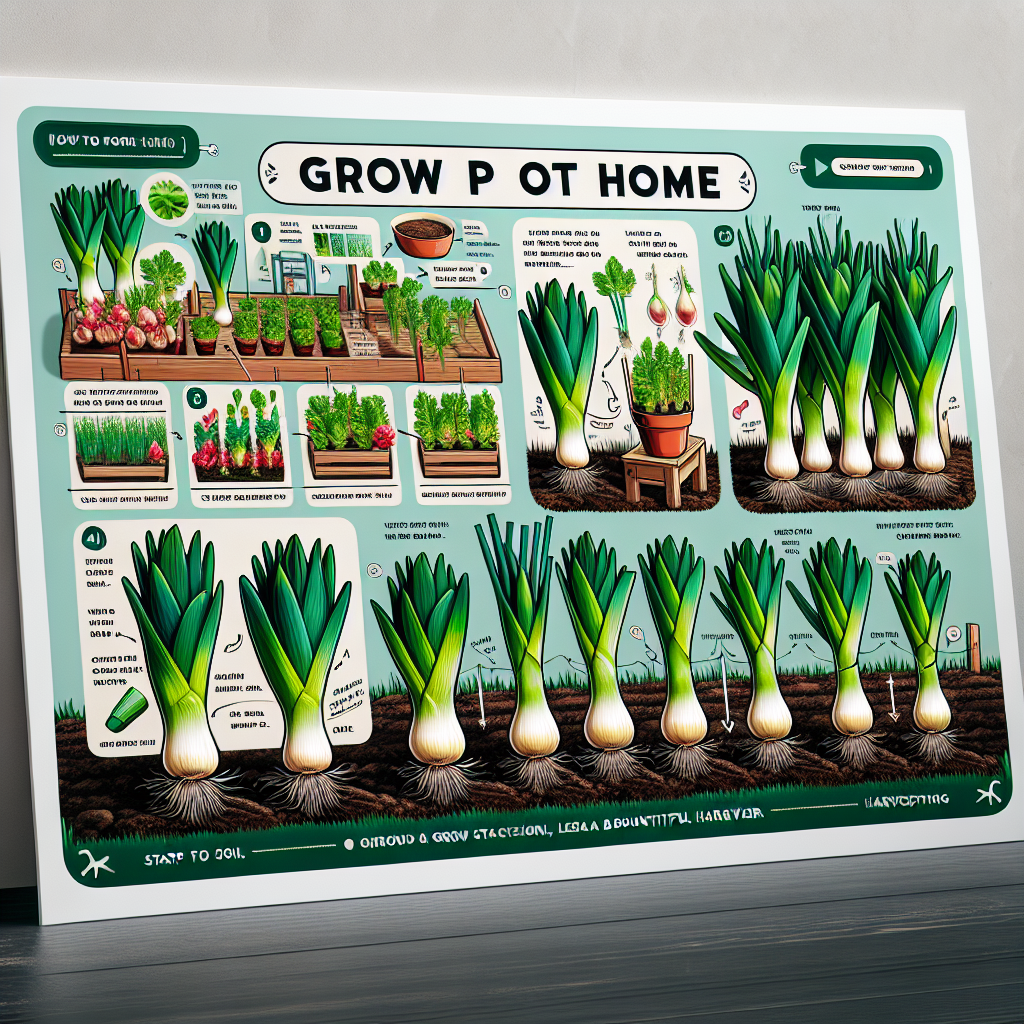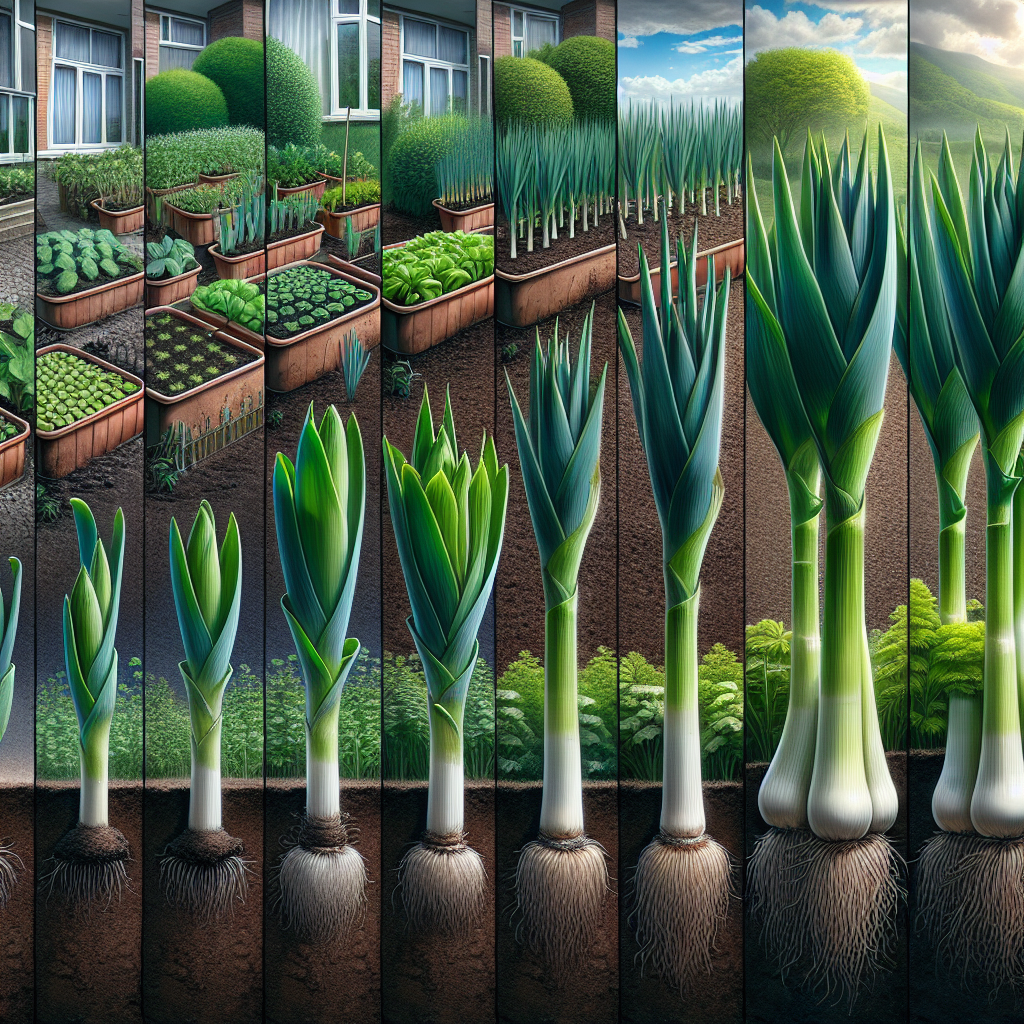Growing Leeks at Home: A Step-by-Step Guide to Bountiful Harvests
Leeks are a versatile and delicious vegetable that can be grown easily at home. With their mild onion-like flavor, leeks can enhance the taste of soups, stews, and various other dishes. If you’re a gardening enthusiast looking to add this flavorful ingredient to your kitchen garden, this step-by-step guide will help you grow bountiful harvests of leeks right in your backyard.
Step 1: Choose the Right Variety
Before starting your leek-growing adventure, it’s important to choose the right variety for your region. Some popular options include ‘King Richard,’ ‘Tadorna,’ and ‘Musselburgh.’ Consider factors such as days to maturity, local climate conditions, and disease resistance when selecting your leek variety.
Step 2: Prepare the Soil
Leeks thrive in well-drained soil rich in organic matter. Begin by clearing the planting area of any weeds or debris. Loosen the soil with a garden fork to a depth of around 12 inches (30 cm). Remove stones or clumps of soil that may hinder root growth. Incorporate compost or well-rotted manure into the soil to improve its fertility. This will provide an optimal growing environment for your leeks.
Step 3: Sow Seeds Indoors
Start your leek-growing journey by sowing seeds indoors during late winter or early spring, around 8-10 weeks before the last expected frost date in your area. Fill seed trays with a quality potting mix and sow seeds about half an inch (1 cm) deep. Ensure proper spacing between seeds for optimal growth. Cover the trays with plastic wrap or a propagator lid to create a warm and moist environment that promotes germination.
Step 4: Transplant Seedlings to Larger Pots
Once the seedlings have developed two or three leaves, they are ready for transplantation into larger individual pots. This will provide them with ample space for further root growth. Make sure to use a well-draining potting mix and gently transfer the seedlings, being careful not to damage their delicate roots. Place the pots in a sunny windowsill or under grow lights to promote healthy growth.
Step 5: Prepare the Garden Bed
While your leek seedlings grow indoors, you can prepare the garden bed outside. Choose a location that receives full sun or partial shade, depending on your region’s climate. Remove any weeds from the area and amend the soil with organic matter to improve its fertility and drainage further. Rake the soil surface until it’s smooth and level before proceeding with planting.

Step 6: Harden Off Seedlings
About two weeks before the last expected frost date, you need to harden off your leek seedlings. Gradually expose them to outdoor conditions by placing them outside for a few hours each day, gradually increasing their exposure time over a week or two. This will help them adjust to the temperature fluctuations and other environmental factors they will encounter when planted in the garden bed.
Step 7: Planting Leeks
When your leek seedlings have been hardened off and outdoor conditions are favorable, it’s time for transplanting them into the garden bed. Dig holes around six inches (15 cm) deep, spaced approximately six inches (15 cm) apart in rows separated by about one foot (30 cm). Carefully remove each seedling from its pot, taking care not to damage its roots, and place it into a prepared hole. Gently firm up the soil around each plant without burying too much of its green foliage.
Step 8: Provide Adequate Water and Nutrients
Leeks require consistent moisture throughout their growing season. Water them regularly but avoid overwatering as this can lead to rotting. Applying mulch around the plants can help retain moisture and suppress weed growth. Additionally, leeks benefit from regular feeding with organic fertilizers or compost tea to ensure they receive the necessary nutrients for healthy development.
Step 9: Maintain Weed and Pest Control
Keep an eye out for weeds in the leek bed and promptly remove them to prevent competition for nutrients and water. Mulching can significantly reduce weed growth. Leeks are generally resistant to pests; however, occasional visits from pests like onion flies or moth larvae may occur. Monitor your plants regularly and take appropriate measures to control any infestations.
Step 10: Harvesting Leeks
Leeks are ready to harvest when their stems have reached a desirable size, typically around two inches (5 cm) in diameter. To harvest, gently loosen the soil around each leek plant with a garden fork, grasping the stem close to the soil line while lifting it carefully. Clean off any excess dirt clinging to the roots and store your harvested leeks in a cool place or refrigerator for later use.
By following this step-by-step guide, you can grow bountiful harvests of leeks right at home. From selecting the right variety to caring for your plants throughout their growing season, you’ll be rewarded with an abundance of flavorful leeks that will elevate your culinary creations like never before. Enjoy the satisfaction of growing your own fresh produce while adding a touch of zest to your meals with homegrown leeks!













